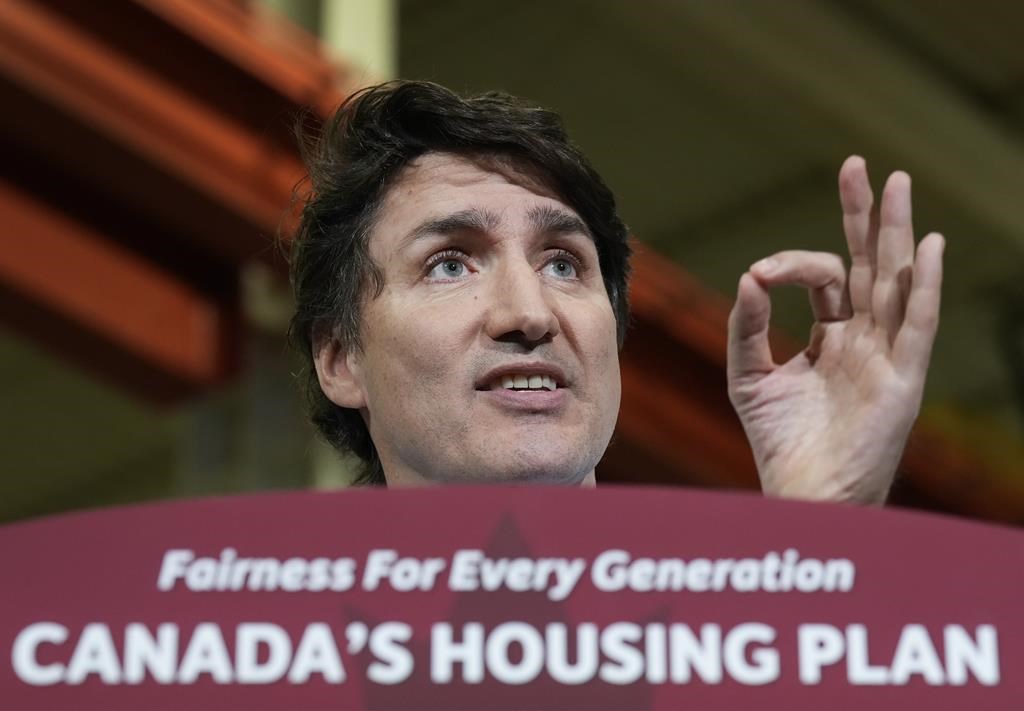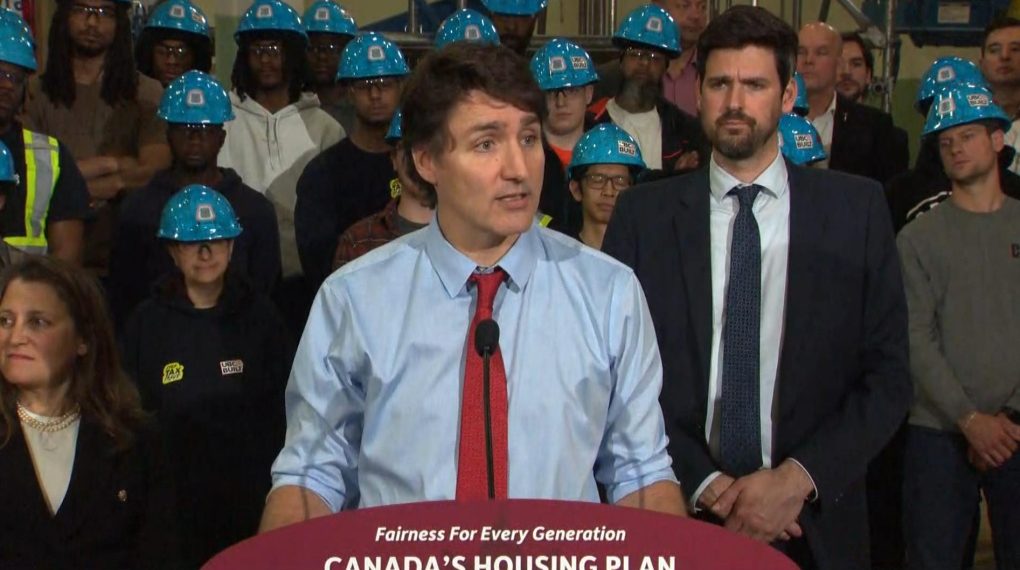Prime Minister Justin Trudeau revealed Canada’s strategy to combat the housing shortage, aiming to construct nearly 3.9 million homes by 2031.
The plan involves leasing underutilized public land to developers for affordable housing projects, potentially repurposing abandoned industrial parks, defunct government sites, and low-enrollment schools.
Despite these efforts, the initiative still faces a shortfall of 1.2 million homes required between 2023 and 2030, as indicated by the Canada Mortgage and Housing Corp.

Trudeau’s Liberal government has recently introduced several measures to tackle the housing crisis, with housing issues expected to feature prominently in the upcoming federal budget.
Trudeau expressed confidence in the plan’s ability to positively impact Canadians’ lives, while Housing Minister Sean Fraser outlined additional measures.
These include changes to tax structures to incentivize institutional builders, proposals for extending low-cost loans, and efforts to combat mortgage fraud.
However, independent experts like Mike Moffatt from the Task Force for Housing and Climate emphasized the substantial investment required to achieve the government’s target. Moffatt stressed the need for further details on the plan’s financial aspects in the upcoming budget.

The housing shortage in Canada is attributed to various factors, including rapid population growth driven by immigration, inflation, and high interest rates.
While housing falls under provincial and municipal jurisdiction, Ottawa relies on policy measures and funding to address the issue, despite lacking a direct role in construction.
Trudeau’s announcement signals a proactive approach by the government to address one of Canada’s pressing challenges, although the effectiveness of the plan will depend on its implementation and the level of investment from stakeholders.





